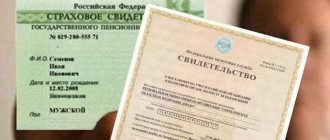How to calculate VAT for legal entities using a calculator
You are a representative of an organization or an individual entrepreneur and want to understand how to calculate 20% VAT included in the amount of goods, or calculate interest on value added to include the tax in the final price of a product or service - this is easy to do using an online calculator. To use the online VAT calculator, perform only one action - enter the required number in the line.
The selected and accrued tax and the amount of sale or purchase with and without tax will appear on the right.
The default VAT calculator is 20 percent, but it allows you to choose. Some goods are taxed at a rate of 10%; to calculate it, you can change the value in the “Tax rate” line, and the calculator will generate the total taking into account the lower rate. When you enter a number in the fields on the right, the total numbers at the rate of 10% will immediately appear.
Without VAT
The “excluding VAT” rate completely excludes tax from the sales amount. That is, the organization is not a VAT payer or is temporarily exempt from paying tax.
Companies using special regimes - simplified tax system, UTII or unified agricultural tax - are exempt from paying VAT. But an OSNO company also has the right not to pay tax. To obtain such permission, you must calculate your revenue received for the last quarter. If it does not reach 2 million rubles and there have been no transactions related to the accrual of excise tax for three months, then you can collect documents to obtain an exemption from VAT.
The company will be able to use such privileges for a whole year. If additional documents are provided, the exemption may be extended. It will not be possible to remove it on your own initiative.
It is profitable to work without VAT only in cases where the tax to be deducted is insignificant. For example, if a company sells goods and services to individuals. Doing business with large companies on OSNO is more difficult - they may not agree to purchases for which VAT deductions cannot be claimed
The easiest way to find out whether a counterparty works with VAT is to look at the terms in the contract. Also, the tax regime of the counterparty in a special service or on the Federal Tax Service website.
VAT calculation for dummies. Popular questions
What kind of tax is this and what goods, works and services are subject to it?
The state collects value added tax from organizations and entrepreneurs who sell goods, services, works and import products through customs. To understand why this indirect payment to the budget is collected, let’s figure out what added value is. Value added is the difference between the purchase price and the selling price. In fact, this is the markup that the seller made, and it should be paid to the budget. All advances received and the cost of any products that an organization or individual entrepreneur gives away for free are subject to taxation (in this case, the VAT 20/120 calculator will help calculate the amount based on the average market value of the product or service). Tax is paid only on value added, so the taxpayer has the right to claim the purchase price as a deduction. But to do this, it must be documented - an invoice or customs documents.
How to calculate tax on the amount?
The easiest way to work is the calculator formula, how to allocate VAT 20% of the amount, let’s look at it using a clear example:
You are the head of an organization and you bought a product from a supplier for 120 rubles. Of these, 20 rubles is the amount of mandatory payment to the budget at a rate of 20%, which you paid, since it is included in the price of the goods. Without such a value added obligation, the purchase would cost 100 rubles. You want to sell this product for 180 rubles - with a 50% markup. To its cost you add 20%, which the buyer of the goods will pay. 20% of 180 rubles is 36 rubles. This means you sell the product for 216 rubles including tax. Your company does not pay into the budget all the revenue it receives from the buyer. You must pay from the part of the price that you added during the sale. The 20 rubles that you paid to the supplier upon purchase are deducted from the total of 36 rubles. The amount of payment you must send to the state will be 36 – 20 = 16 rubles.
Payers
In Russia, value added tax is paid by all legal entities and individual entrepreneurs, except:
- business entities using the simplified tax system;
- UTII payers;
- those taxpayers whose revenue for the year amounted to no more than 2 million rubles (to be released from the status of a payer and the need to pay, submit an application to the territorial inspectorate of the Federal Tax Service).
Taxation rates and objects
There are 2 regular bets:
- 20% - main;
- 10% - reduced.
And one preferential rate - 0%.
The main one is used more often - 20%. Due to its prevalence, we will show in examples how to separate VAT from the amount or how to add 20% to the surcharge.
A reduced rate of 10% applies to the sale of those types of products and services that are directly listed in the Tax Code:
- childen's goods;
- educational literature;
- food products listed in Article 164 of the Tax Code of the Russian Federation;
- some medical products;
- breeding animals.
A preferential zero rate, like a ten percent rate, is used when selling goods, works and services from a clearly limited list (Article 164 of the Tax Code of the Russian Federation). One of the items on the list is export. The right to use a 0% rate is documented.
What is settlement rate?
Sometimes the payment amount is calculated from income with tax already contained in it. Then it is possible to calculate VAT 20 from the amount using an online calculator or apply the reverse method of calculation using the formulas:
These are the calculated rates of 20/120 or 10/110. The calculator already takes into account all calculated rates, so it makes the calculation easier. The VAT calculator will calculate 20% of the amount in just a few clicks. Let's look at an example:
The company received an advance in the amount of 120 rubles including tax. How to calculate the tax on the amount in this case? Tax on such advances is paid at the normal estimated rate. It will be: 120*20/120 = 20 rubles.
Separating VAT from the amount in this case gives the same result as using the usual rate of 20%. Whether you made the calculations correctly at the regular rate will be shown by the calculation formula for calculating VAT of 20 percent (a similar one applies for 10 percent).
There are seven cases when the calculated rate is used, they are listed in Article 164 of the Tax Code. Payment to the budget is calculated this way only if VAT is already included in the revenue received from the buyer and it is necessary to calculate its value from the amount of the cost of the goods, work or service.
It's necessary:
- When receiving funds for goods from the list of Article 162 of the Tax Code of the Russian Federation:
- money that the company receives upon sale as financial assistance or to replenish the fund;
- income in the form of interest for paying for products with bills or bonds or in the form of interest that is higher than the main rate of the Central Bank;
- income from insurance payments in case of failure to fulfill obligations by partners.
- When receiving advances for an upcoming delivery or transfer of property rights.
- When the amount is withheld by tax agents.
- When selling purchased property.
- When selling agricultural products.
- When reselling cars purchased from individuals.
- When transferring rights to property under paragraphs 2-4 of Article 155 of the Tax Code of the Russian Federation.
Now that we know how to calculate VAT 20% of the amount on the calculator, let’s consider the question of how the accrual formula will help in determining the deduction due to the taxpayer.
What is a tax deduction?
A deduction is actually the tax that you paid when purchasing a product from a supplier, which is included in its price. There is no product whose price does not contain such a part. Even when goods arrive from abroad, they are taxed when crossing the borders of the Russian Federation at their customs declared value. When further selling products at the price you set, you owe the budget minus this amount. The taxpayer is required to present documents from the supplier proving the purchase of products and payment of VAT included in the price. In most cases, confirmation is invoices. In addition to the amounts presented by suppliers, it is allowed to deduct (Article 171 of the Tax Code of the Russian Federation):
- withheld upon import at customs;
- paid to the budget upon sale, if the buyer later refused and returned the goods;
- paid in advance, if the contract is later terminated and the advance payment is returned;
- presented by the contractor during capital construction or installation (dismantling) of fixed assets;
- presented by suppliers of goods needed for the company’s own construction needs;
- paid to the budget during construction for the needs of the company;
- transferred to the budget by tax agents;
- paid in connection with travel or entertainment expenses;
- paid for exports not previously confirmed by papers after confirmation;
- paid from the cost of property included in the authorized capital.
VAT 0%
0% — export tax rate.
With it you can sell services related to the international transportation of goods, products from the field of space activities, precious metals and other rare goods. The zero VAT rate requires documentary confirmation. To do this, you need to submit the appropriate package of documents to the tax office within the prescribed period. Otherwise, the tax will have to be charged at the general rate of 20% or 10%.
To confirm the zero rate, 180 days are allocated. You need to start calculating the period from the moment when customs marks appear in the documentation
The conclusion is the following: the zero rate is used by organizations and entrepreneurs who are engaged in specific activities. More taxpayers work without VAT.
Deduction of VAT from advance payment upon shipment without transfer of ownership in “1C: Accounting 8”
Let's consider an example of how the seller reflects the deduction of VAT from an advance payment when shipping goods to the buyer without transferring ownership of the specified goods in the 1C: Accounting 8 version 3.0 program.
Example
| The organization Trading House LLC (seller), in accordance with the concluded supply agreement with Clothes and Shoes LLC (buyer), ships goods for a total amount of RUB 360,000.00. (including VAT 20% - RUB 60,000.00) on condition of advance payment of 25%. According to the contract, ownership of the goods passes to the buyer after full payment for the goods. The sequence of operations is given in the table. Table |
Receiving partial advance payment
The operation of receiving partial payment on account of the upcoming delivery of goods (operation 1.1 “Receiving advance payment from the buyer”) in the 1C: Accounting 8 program, edition 3.0 is registered using the document Receipt to the current account with the transaction type Payment from the buyer, which is generated:
- based on the document Invoice for payment to the buyer (section Sales - subsection Sales - journal of documents Invoices to buyers);
- or by adding a new document to the Bank Statements list (section Bank and cash desk - subsection Bank - document journal Bank Statements).
As a result of posting the document, the following accounting entry is entered into the accounting register:
Debit 51 Credit 62.02 - for the amount of the received advance payment, which is 90,000.00 rubles.
In accordance with paragraphs 1, 3 of Article 168 of the Tax Code of the Russian Federation, the buyer of goods who has transferred the prepayment amount must be issued an invoice no later than 5 calendar days, counting from the date of receipt of the prepayment.
An invoice for the received prepayment amount (operations 1.2 “Issuing an invoice for the amount of prepayment”; 1.3 “Calculation of VAT on the received prepayment”) in the program is generated on the basis of the document Receipt to the current account using the Create based button. Automatic generation of invoices for advances received from customers can also be done using the processing Registration of invoices for advance payments (section Banks and cash desk - subsection Registration of invoices).
In the new document Invoice issued (Fig. 1), the basic information will be filled in automatically according to the base document:
- in the from field - the date of preparation of the invoice, which by default is set to the same date as the date of generation of the document Receipt to the current account;
- in the Counterparty, Payment document No. and from fields - the relevant information from the basis document;
- in the Invoice type field – the value For advance;
- in the tabular part of the document - the amount of the received prepayment in the amount of 90,000.00 rubles, the VAT rate in the amount of 20/120 and the amount of VAT in the amount of 15,000.00 rubles. (RUB 90,000.00 x 20/120).
Rice. 1. Invoice issued for advance payment
In addition, the following will be automatically entered:
- in the Transaction type code field - value 02, which corresponds to payment, partial payment (received or transferred) on account of upcoming deliveries of goods (work, services), property rights (Appendix to the order of the Federal Tax Service of Russia dated March 14, 2016 No. ММВ-7-3/ [email protected] );
- the Compiled switch is moved to the position On paper, if there is no valid agreement on the exchange of electronic invoices, or In electronic form, if such an agreement has been concluded;
- flag Issued (transferred to the counterparty) indicating the date - if the invoice is transferred to the buyer and is subject to registration. If there is an agreement on the exchange of electronic invoices, until confirmation of the electronic document management (EDF) operator is received, the flag and date of issue will be absent. If the date of transfer of a paper invoice to the buyer is different from the date of preparation, then it must be adjusted;
- The Manager and Chief Accountant fields are data from the Responsible Persons information register. If the document is signed by other responsible persons, for example, on the basis of a power of attorney, then it is necessary to enter the relevant information from the directory Individuals.
For the correct preparation of an invoice, as well as the correct reflection of the document in the accounting system, it is necessary that in the Nomenclature field of the tabular part of the document the name (or generic name) of the goods supplied is indicated in accordance with the terms of the contract with the buyer.
This information is filled in automatically indicating:
- names of specific product items from the document Invoice to the buyer, if such an invoice was previously issued;
- a generic name, if such a generic name was defined in the agreement with the buyer.
By clicking the Print document Invoice issued (Fig. 1) button, you can go to view the invoice form and then print it in two copies.
According to the Rules for filling out an invoice, approved. By Decree No. 1137, the invoice for the prepayment amount received indicates:
- in line 5 - details (number and date of preparation) of the payment and settlement document (clause "h" clause 1 of the Filling Rules);
- in column 1 - the name of the goods supplied (description of work, services), property rights (clause “a”, clause 2 of the Filling Rules);
- in column 8 - the amount of tax calculated on the basis of the tax rate determined in accordance with paragraph 4 of Article 164 of the Tax Code of the Russian Federation (clause “z” of paragraph 2 of the Filling Rules);
- in column 9 - the amount of advance payment received (clauses “and” clause 2 of the Filling Rules);
- in lines 3 and 4 and columns 2-6, 10-11 - dashes (clause 4 of the Filling Rules).
As a result of posting the document Invoice issued, an accounting entry is generated:
Debit 76.AB Credit 68.02 - for the amount of VAT calculated on the amount of advance payment received from the buyer in the amount of RUB 15,000.00. (RUB 90,000.00 x 20/120).
Based on the issued Invoice document, an entry is made in the information register of the Invoice Log.
Despite the fact that since 01/01/2015, taxpayers who are not intermediaries (forwarders, developers) do not keep a log of received and issued invoices, register entries in the Invoice Log are used to store the necessary information about the issued invoice.
Based on the document Invoice issued, registration entries are made in the Sales VAT accumulation register to form a sales book for the tax period of receiving advance payment, i.e. for the third quarter of 2022.
Shipment of goods without transfer of ownership
To enable the mechanism for calculating VAT on shipment transactions without transfer of ownership, you must set the flag for the value Accrue VAT on shipment without transfer of ownership on the VAT tab of the Taxes and Reports Settings form (Main section - subsection Settings - Taxes and Reports).
To perform operations 2.1 “Reflection of the shipment of goods without transfer of ownership”; 2.2 “Calculation of VAT on shipment without transfer of ownership”, a Sales document (act, invoice) is created with the transaction type Shipment without transfer of ownership (section Sales - subsection Sales), fig. 2. After posting the document, the following accounting entries are entered into the accounting register:
Debit 45.01 Credit 41.01 - for the cost of goods shipped;
Debit 76.OT Credit 68.02 - for the amount of VAT accrued upon shipment of goods, which is RUB 60,000.00. (300,000.00 x 20%).
Rice. 2. Shipment of goods
A registration entry is made in the Sales VAT accumulation register to create a sales book for the tax period of shipment of goods, i.e. for the third quarter of 2022.
To issue an invoice for shipped goods (operation 2.3 “Issuing an invoice for shipped goods”), you must click on the Issue an invoice button at the bottom of the document Sales (act, invoice) with the transaction type Shipment without transfer of ownership (Fig. 2) . In this case, the document Invoice issued is automatically created, and a hyperlink to the created invoice appears in the form of the basis document.
In the new posted document Invoice issued (Fig. 3), which can be opened via a hyperlink, all fields will be filled in automatically based on the data in the document Shipment without transfer of ownership.
Rice. 3. Shipping invoice
Besides:
- in the line Basis documents there will be a hyperlink to the corresponding implementation document (deliveries);
- in the Operation type code field the value 01 will be reflected, which corresponds to the shipment (transfer) of goods (work, services), property rights (Appendix to the order of the Federal Tax Service of Russia dated March 14, 2016 No. ММВ-7-3 / [email protected] );
- The Receipt Method switch will be set to Hard copy if there is no valid agreement with the seller to exchange invoices electronically. If there is an agreement, then the switch will be in the Electronic position;
- in the line Issued (transferred to the counterparty), a flag will be placed and the date of registration of the Sales document (act, invoice) will be indicated, which, if necessary, should be replaced with the date of actual issuance of the invoice. If an agreement has been concluded with the buyer on the exchange of invoices in electronic form, then the date of sending the electronic invoice file to the EDF operator, indicated in its confirmation, will be entered in the field.
To fulfill the requirement of subparagraph “h” of paragraph 1 of the Filling Rules, you must click on the Add button to enter in the Payment documents field of the Invoice issued document the details of the payment and settlement document for the amount of the received partial advance payment.
As a result of posting the issued Invoice document, a registration entry is made in the Invoice Journal register to store the necessary information about the issued invoice.
An additional entry will also be created in the Sales VAT accumulation register to store information about the payment and settlement document.
Using the Print document Invoice issued button (Fig. 3), you can view and print the invoice.
Amounts of tax calculated by the taxpayer from amounts of payment, partial payment received on account of future deliveries of goods (work, services) are subject to tax deduction from the date of shipment of the relevant goods (performance of work, provision of services), transfer of property rights in the amount of tax calculated from the cost shipped goods (work performed, services provided), transferred property rights, in payment for which the amount of previously received payment, partial payment in accordance with the terms of the contract (if such conditions exist) are subject to offset (clause 8 of Article 171 of the Tax Code of the Russian Federation, clause 6 of Art. 172 of the Tax Code of the Russian Federation).
To reflect operation 2.4 “Acceptance for deduction of VAT from advance payment”, you need to create the document Generating purchase ledger entries (section Operations - subsection Closing the period - hyperlink Regular VAT operations), fig. 4.
Rice. 4. Generating purchase ledger entries
The document is automatically filled in by clicking the Fill button. The Advance payments received tab automatically displays information about received advance payment amounts and VAT amounts previously calculated from the received advance payment amounts and offset against the shipment of the corresponding goods.
Since when goods are shipped without transfer of title, advance payment is not offset, the bookmark is not automatically filled in. Therefore, by clicking the Add button, it is necessary to enter into the tabular part of the document information about the amounts of advance payment received on account of the shipment of goods, which will be offset against payment for the shipped goods after they are sold to the buyer.
As a result of posting the document Formation of purchase ledger entries, an entry is made in the accounting register:
Debit 68.02 Credit 76.AB - for the amount of VAT calculated upon receipt of an advance payment and claimed for deduction after shipment of the relevant goods.
To register the document Invoice issued in the purchase book, an entry is made in the Purchase VAT accumulation register.
Thus, registration entries will be entered into the sales book for the third quarter of 2022 (approved by Decree of the Government of the Russian Federation dated December 26, 2011 No. 1137, as amended by Decree of the Government of the Russian Federation dated January 19, 2019 No. 15) (section Reports - VAT subsection) (Fig. 5):
- according to invoice No. 22 dated September 20, 2019 - for the amount of VAT calculated on the advance payment received in the amount of RUB 15,000.00. with KVO 02;
- according to invoice No. 23 dated September 26, 2019 - for the amount of VAT accrued upon shipment of goods in the amount of RUB 60,000.00. with KVO 01.
Rice. 5. Sales book for the third quarter of 2022
A registration entry will be made in the purchase book for the third quarter of 2022 (approved by Resolution No. 1137, as amended by Decree of the Government of the Russian Federation dated January 19, 2019 No. 15) (section Reports - VAT subsection): (Fig. 6):
- according to invoice No. 22 dated September 20, 2019 - for the amount of VAT calculated on the advance payment received and subject to tax deduction in the amount of RUB 15,000.00, with QUO 22.
Rice. 6. Purchase book for the third quarter of 2022
Section 3 of the VAT tax return for the third quarter of 2022 will reflect (section Reports - subsection 1C-Reporting - hyperlink Regulated reports):
- on line 010 - tax base in the amount of 300,000 rubles. (column 3) and the amount of VAT accrued upon shipment of goods in the amount of 60,000 rubles. (column 5);
- on line 070 - tax base in the amount of 90,000 rubles. (column 3) and the amount of VAT calculated upon receipt of partial advance payment in the amount of 15,000 rubles. (column 5);
- on line 170 - the amount of VAT calculated upon receipt of the advance payment and claimed for tax deduction from the date of shipment of the relevant goods, in the amount of 15,000 rubles. (column 3).
Receiving payment
The transaction of receipt of payment (operation 3.1 “Receiving payment from the buyer”) is reflected in the program using the document Receipt to the current account with the transaction type Payment from the buyer, which is generated:
- based on the document Invoice for payment to the buyer (section Sales - subsection Sales - journal of documents Invoices to buyers);
- or by adding a new document to the Bank Statements list (section Bank and cash desk - subsection Bank - document journal Bank Statements).
As a result of posting the document, the following accounting entry is entered into the accounting register:
Debit 51 Credit 62.02 - for the amount of payment received, which is RUB 270,000.00.
Please note that the amount of payment received by the seller after the goods have been shipped, but before they are sold, is actually an advance payment. At the same time, according to paragraph 1 of Article 167 of the Tax Code of the Russian Federation, upon receipt of such advance payment, the seller does not have the moment of determining the tax base, since the earliest date in this case is the day of shipment of the goods (letter of the Ministry of Finance of Russia dated January 24, 2019 No. 03-07-11 /3850). Consequently, the seller should not issue an invoice for the amount of the received advance payment and calculate the amount of VAT from this advance payment. When automatically generating invoices for advances received from customers using the processing Registration of invoices for advance payments (section Banks and cash desk - subsection Registration of invoices) after executing the Fill command before executing the Execute command Execute a line from the tabular section indicating this amount prepayments must be removed.




